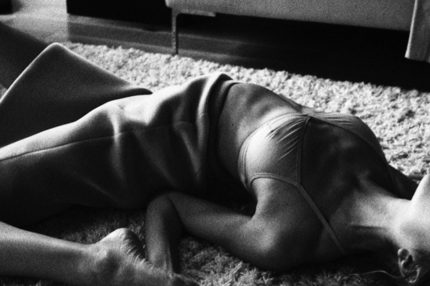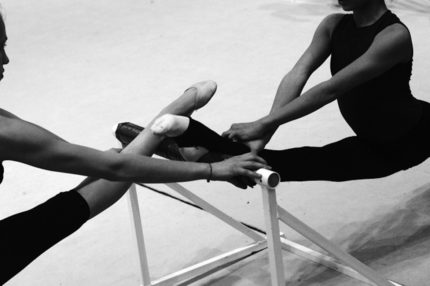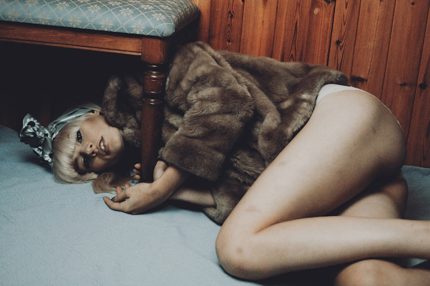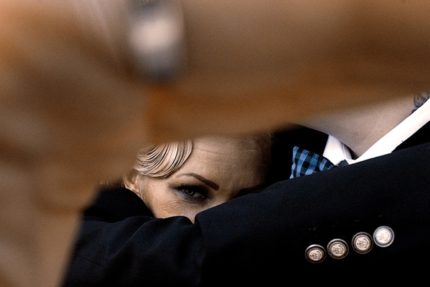
Who dictates the dynamic between photographer and subject? Is photography a form of control? Or does there exist an element of intangible complicity: a driving desire from both photographer and subject to see and be seen? Perhaps within in each image is a proclamation: I exist and in seeing, you do too. Alina Negoita’s photography seems to speak to this sentiment. Her subjects and locations transcend the bounds convention and are multifarious. Her body of work is tangential yet unique. MONROWE spoke with Negoita, a self-proclaimed feminist, about subverting the dynamics of the gaze, Lee Miller, and the tender divide between art and truth.
HHJ: How did your childhood in Romania influence your aesthetic?
AN: I didn’t grow up in a big city. I grew up in a town where the sun was plentiful and everyone seemed to know everyone. The light, the chaotic atmosphere of an ex-communist space, and the strange juxtapositions of old versus new all make their way into my photographs. It translates through colors and tones, framing, places, and the people I photograph, and the close relationship I have with my subjects.
HHJ: What does it mean for you to be a Romanian photographer in London?
AN: I became interested in cultural identities from a very young age and started to focus on this consciously in my practice after moving to London. I felt that my country and cultural identity was being perceived in a specific way so I started to explore my roots and cultural background through projects like “Birds in Space”. It explores the identity, resilience, and integrity of Romania through the movement and form of the young gymnasts coming of age in my hometown. Some of the projects I am currently working on deal with socio-political issues such as women’s rights, female soldiers, and racism in Romania. Being a Romanian photographer in London means that I can expose these issues to a larger audience. I also have more opportunities in London then I would have back home but I don’t tend to look at things this way. I’m mostly interested in the social exchange with the subject and contributing to positive change.
HHJ: How do you make the decision to do that as an artist?
AN: By focusing on the integrity of the subject and not tokenizing it, and by finding the balance between the story and the aestheticization of it.


HHJ: There is something really honest about your work.
AN: Sally Mann once said, ‘’The things that are close to you are the things you can photograph the best. And unless you photograph what you love, you are not going to make good art.’’ I believe in this wholeheartedly. Honesty is inseparable from art. If your engagement and interest in the subject does not come from a place of complete honesty, it doesn’t lead anywhere.
HHJ: How do you avoid objectifying the female body, or just the body in general as a photographer?
AN: As a woman myself being photographed and also as a woman photographer, I’m well aware of how women are subjected to the gaze. Objectification deprives women of certain rights and leads to stereotypes. This doesn’t solely mean the specific ways others portray us but also the personal choices women make of how they want to be seen, which can itself be a self-form of objectification.
HHJ: Does your photographic work challenge ideas around conventional beauty?
AN: I would say so. I embrace diversity and confidence, not principles created by others that you have to look or act in a certain way in order to be good enough.


HHJ: What about capturing the body in motion is interesting to you?
AN: The form. The body’s ability to stretch in such incredible ways. The curves, the angles, all the lines created – imagine Kandinsky paintings turned photographs.
HHJ: Who else influences your work as an artist?
AN: My first painting was a reproduction of Toulouse-Lautrec’s “La Toilette”. When I started photography, Mike Brodie was a big influence. Lee Miller, Martha Rosler, Susan Meiselas, Zanele Muholi, Barbara Kruger, Jenny Holzer, Chantal Akerman, Susan Sontag, Patti Smith, Bjork – the list is never-ending.
HHJ: I love Lee Miller’s work and think she’s incredible—her work and what she stands for.
AN: She truly is fascinating. I think of “Lee Miller in Adolf Hitler’s bathtub” as one of the most political photographs ever taken. The way she uses photography to provoke important discussions as reflections of war is incredibly thought provoking. I might be subjective, but I do think that Miller was the one who pushed magazines like Vogue forward.
HHJ: What about the act of looking and being looked is intriguing to you as a photographer?
AN: It’s political. Wim Wenders used to say that, “The most political decision you can make is where you direct people’s eyes”. Taking into consideration what I am currently working on, women are so used to being looked at, objectification is normalized, and I am interested in challenging this unhealthy, conventional way we look at them.

